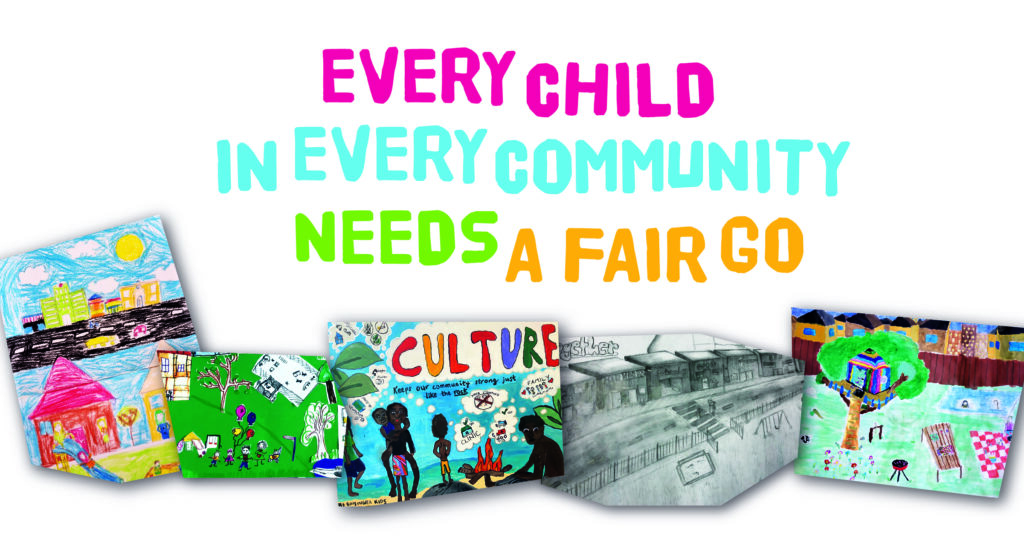Child Protection Week is Sept 5-11 with the theme “Every child, in every community, needs a fair go.”.
The Synod Safe Church Unit is encouraging congregations to reflect on how children get a fair go through being empowered to have a say in decisions that affect them. The Second Child Safe Standard is “Children and young people are informed about their rights, participate in decisions affecting them and are taken seriously.”
This standard encourages us to listen to the voices of children in church matters.
The voice of the child is often silent because children and young people have been disempowered. They are physically smaller, younger and perceived as lacking life experience. Children who feel disempowered are at greater risk of harm. Children can give valuable input into child safe decision-making processes.
One congregation seeking to actively listen to the children asked them to identify where on the church property they felt safe or unsafe. The property had a worship centre with a narrow walkway between the church and the hall. The toilets are located at the end and of the walkway. Behind the hall is a grassed area with play equipment, this area has a high fence and a public basketball court on the other side.
The children identified that they felt unsafe in the walkway and in the grassed area. They felt unsafe because the walkway was isolated and poorly lit while the play area was not visible to adults in the hall and they did not know who was in the basketball court. The adults when asked the same question identified the walkway because of the poor lighting. All were surprised how the children felt unsafe in the grassed area.
A child knows situations, places or people that make them feel safe or unsafe so listening to our children can provide much insight. Where do children feel safe and unsafe in your congregation?
The Office of the Children’s Guardian has a great resource ‘Empowerment and Participation – A guide for organisations working with children and young people’.
The Safe Church Unit recommends this to all congregations and entities. The document explains what empowerment of children is and its importance in keeping children and young people safe as a child safe organisation. The guide provides practical information and tools describing how to encourage children and young people to participate in ways that strengthen their confidence and safety. It helps congregations build a strong framework establishing a culture that supports empowerment and participation by children and young people.
An empowering culture starts with establishing child safe policies, codes of conduct, establishing child safe contact practices and clearly outlining boundaries for adults interacting with children. Having this framework is vital, as well as empowering children and building trust through either planned or everyday activities that a child has with adults in the church. Both informal and planned activities need to feel safe for children and young people. Congregations are encouraged to consider how both informal and planned activities help to build trust including:
| Everyday informal activities | Planned activities | What Empowerment of Children might look like |
| Discussing personal safety with children and young people, and how to raise any concerns | Conducting workshops to hear from children and young people about what makes them feel safe or unsafe in your organisation, and how things can be improved | Provide age appropriate platforms for children and young people to communicate and participate e.g. through games, creative activities and group discussion. |
| Encouraging feedback after every activity in relation to feeling safe | Having a child safety policy developed in consultation with children and young people | Implement a time after activities where children can discuss how they felt about the activity and how this could be made safer for them. Agree any possible changes as a result. |
| Giving children and young people time and opportunities to express their views | Developing age-appropriate versions of Codes of Conduct and safety policies, which are available as posters, videos and social media | Understand that children may communicate their views non-verbally, e.g. through changes in behaviour or participation |
| Giving children and young people authority in tasks and activities | Having a children and young person’s representative committee | Children work together to help design activities and make decisions |
| Checking in regularly with children and young people regarding their experiences in the organisation | Including children and young people in leadership meetings | Consider and reflect children’s views to improve their activities and processes e.g. through discussion in team or management meetings |
| Having a suggestion box | Conduct periodic feedback surveys, discussions or online polls | |
| Giving children and young people opportunities to design and lead activities | ||
| Appointing children and young people as peer supporters |
Developing a child safe culture and implementing the Child Safe Standards is an evolving piece of work for all congregations. It is necessary for everyone to reflect on their culture, past and present and identifying areas for improvement. A child safe culture is important for every congregation including those where children are not regularly present. The Safe Church Unit website has many helpful resources and we are always available to support congregations and presbyteries on how to develop an implementation plan of the Child Safe Standards. If your congregation has a story to tell about how you empower children, we would love to hear it. Please send your stories to our email address safechurch@nswact.uca.org.au
Anne Empson
Safe Church Unit












